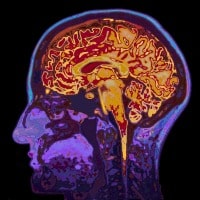Researchers at Tohoku University Graduate School of Pharmaceutical Sciences headed by Dr. Shigeki Moriguchi together with Professor Kohji Fukunaga, have concluded that Alzheimer’s disease can be described as a diabetic disorder of the brain. The team noticed a similarity in how insulin signaling works in the brain as well as in the pancreas of diabetic patients. Their study was published in ScienceDaily on November 9, 2016. Dr. Moriguchi noted that the Kir6.2 channel blockade showed an increase in the pancreas of insulin signaling, which decreases the levels of blood glucose. Insulin signaling increases the acquisition of memory in the brain.
A drug widely used to treat Alzheimer’s disease, Memantine, is an inhibitor of the NMDA receptors that prevent the brain from having excessive glutamate transmission. The team concluded that the ATP-sensitive potassium channel (Kir6.2 channel), which improves the brain’s insulin signal dysfunction, is also inhibited by Memantine.
Employing a mouse model, the researchers found that Memantine improved memory-related behaviors in the mice and mediated the action of the anti-diabetic drug in the peripheral tissues. This leads to higher memory retention and cognitive function in Alzheimer’s patients.
Alzheimer’s is a neurodegenerative disease that normally is found in people over the age of 65. There are approximately 24 million people throughout the world who have dementia, with the majority being due to Alzheimer’s.
Signs of Alzheimer’s are progressive cognitive deterioration, declining daily living activities, behavioral changes, with an early symptom and the most common type of dementia, being memory loss manifested as minor forgetfulness that becomes steadily denser as the illness progresses. Plaques containing misfolded peptides and neurofibrillary tangles are formed in the brain numerous years before the clinical signs are observed.
The cause of Alzheimer’s is unknown, and while medications can sometimes reduce the symptoms, they cannot change the course of the pathology. The four genes involved have in common that mutations in each lead to an excessive accumulation in the brain of Aß, which is the main component of the plaques that occur in the brains of AD patients.
The researchers hope that the results of their study and the parallels drawn with diabetes and the brain will eventually lead to new promising treatments for Alzheimer’s disease.




